Charles E W Bean, Diaries, AWM38 3DRL 606/91/1 - October 1917 - Part 3
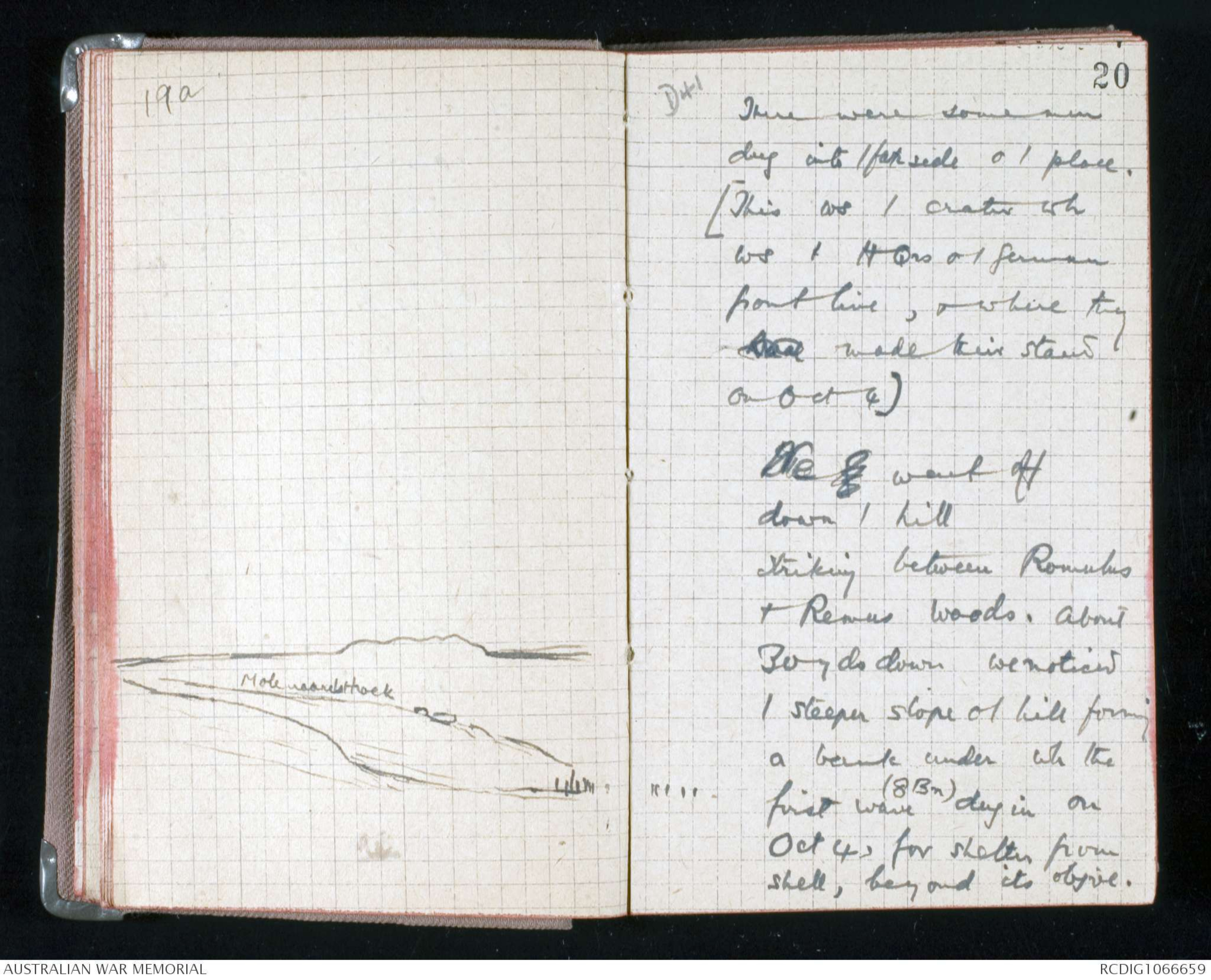
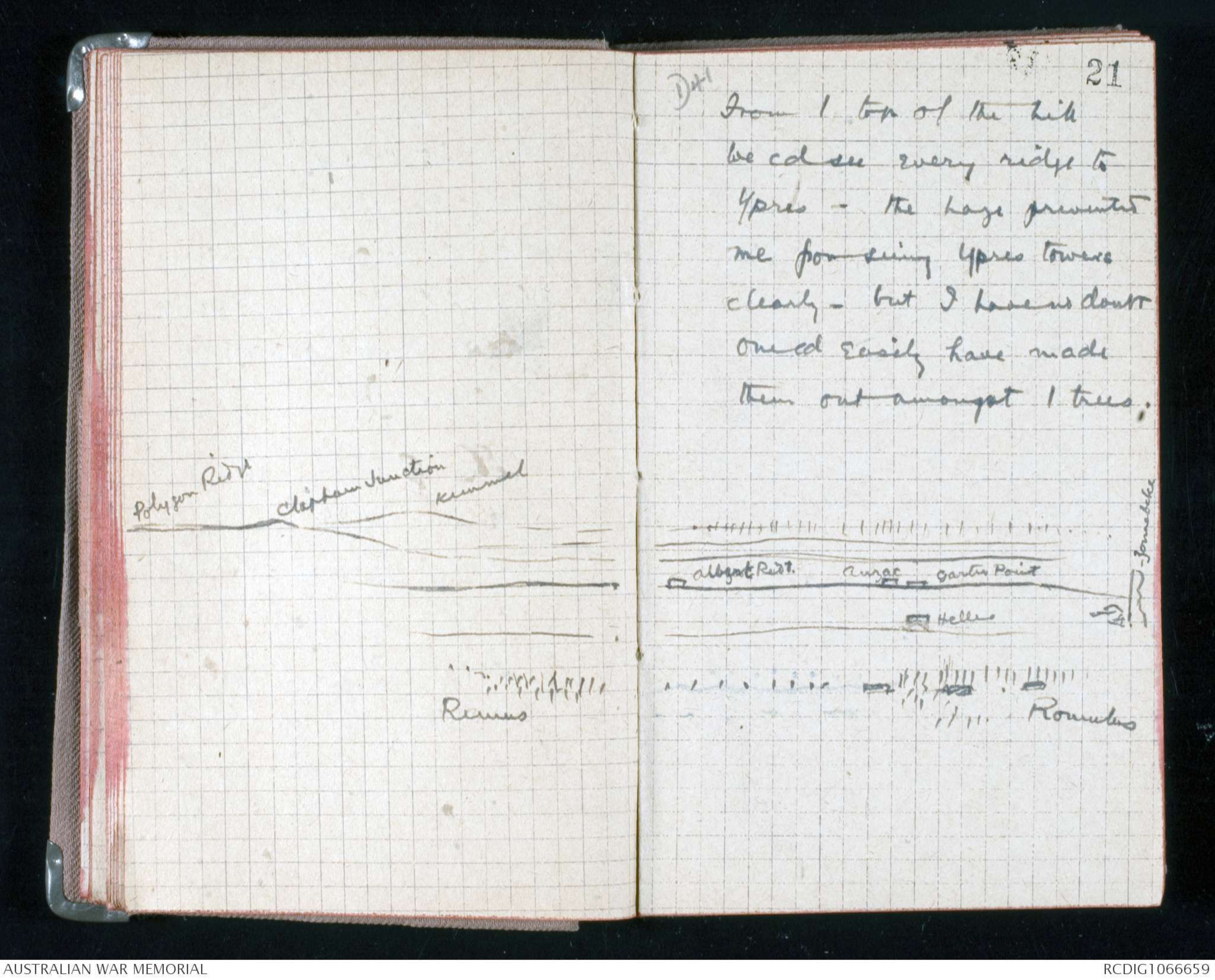
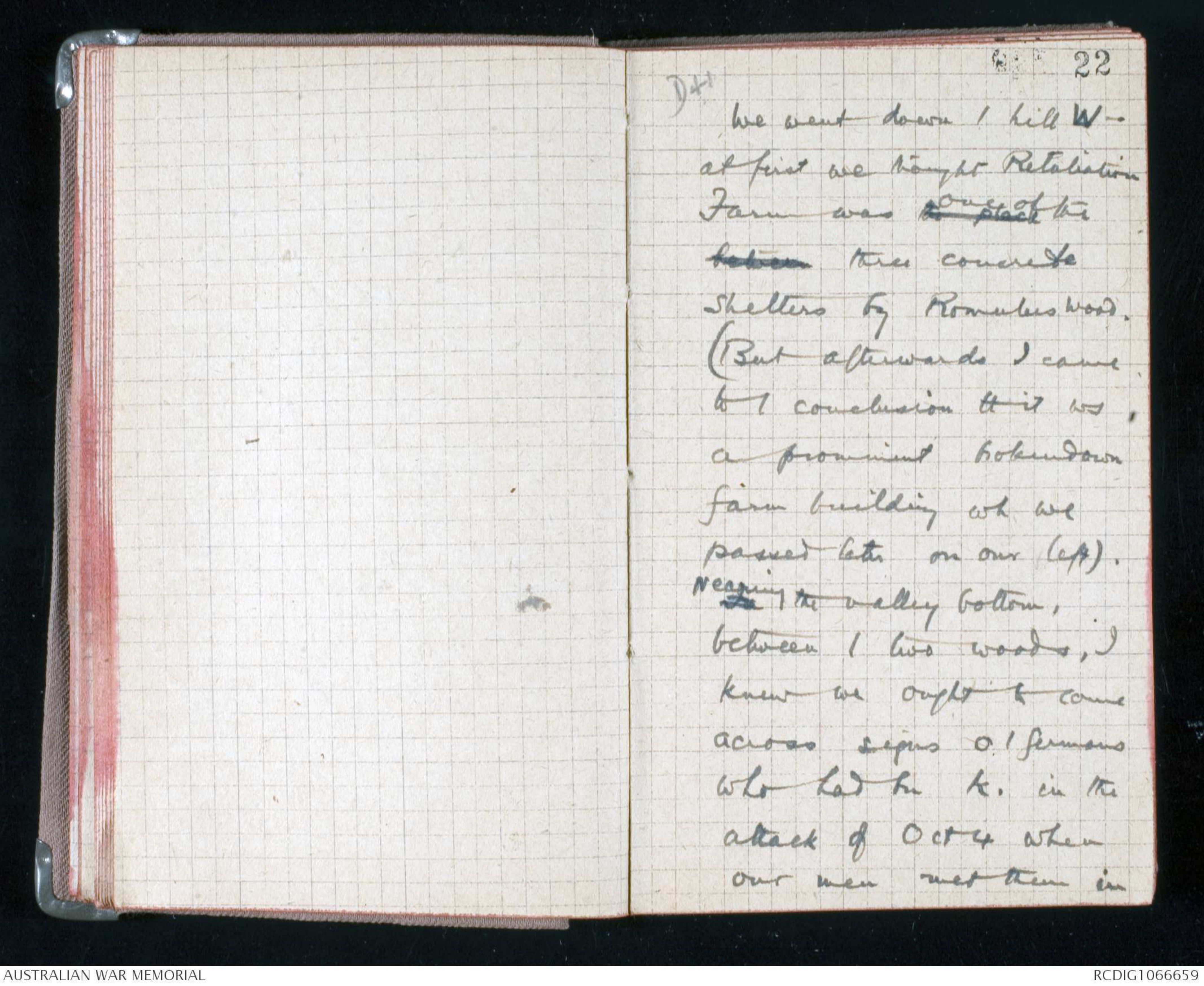
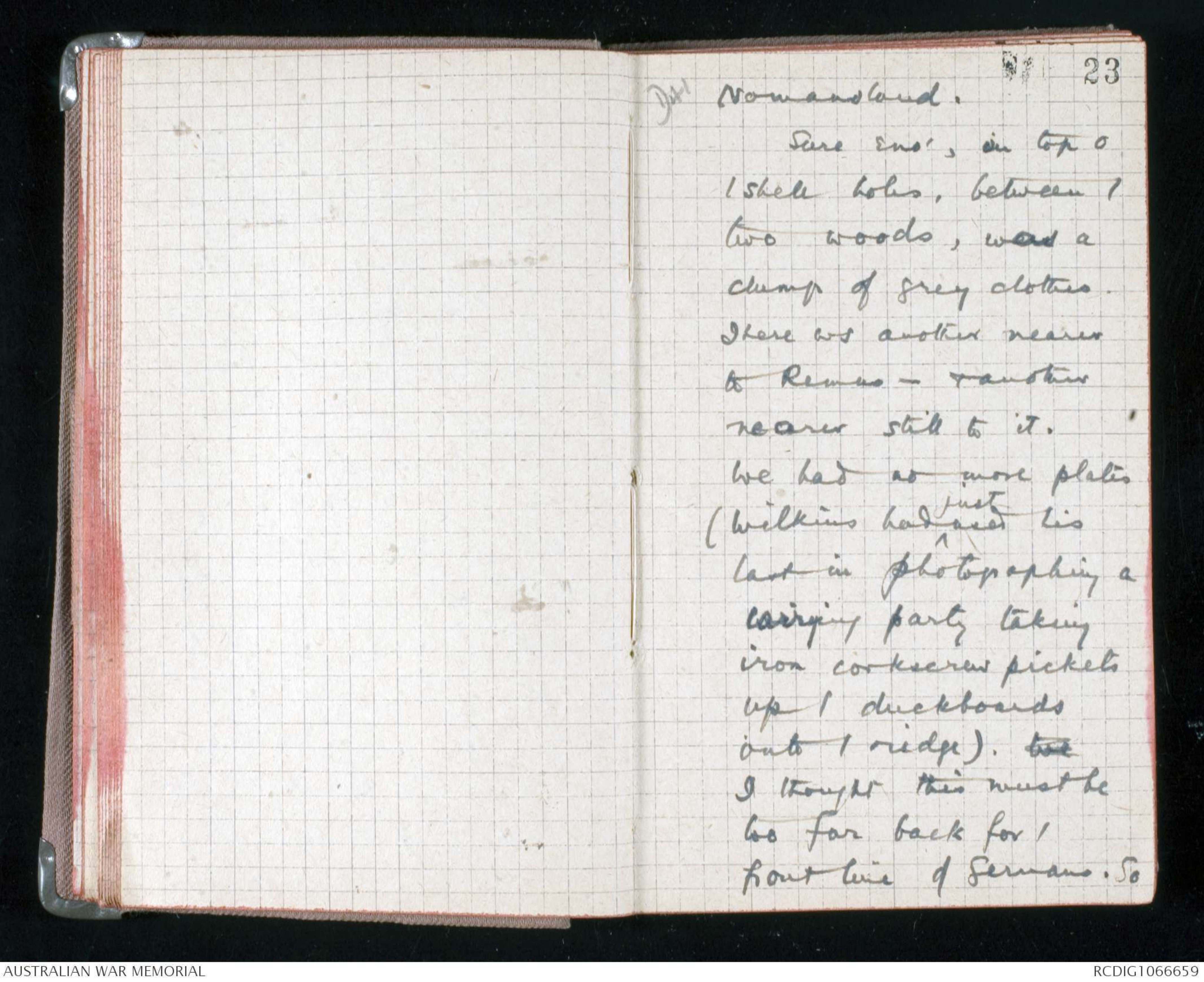
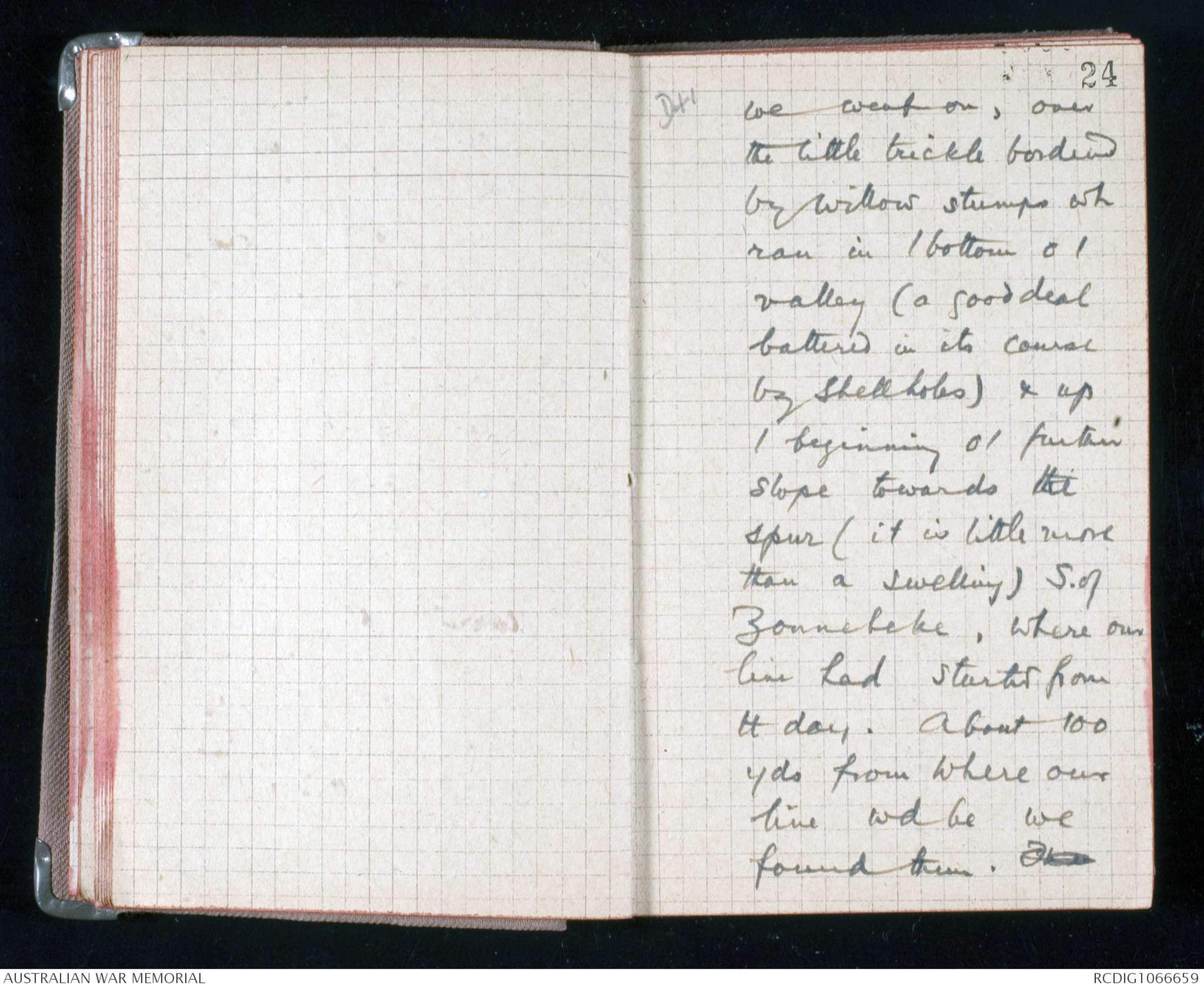
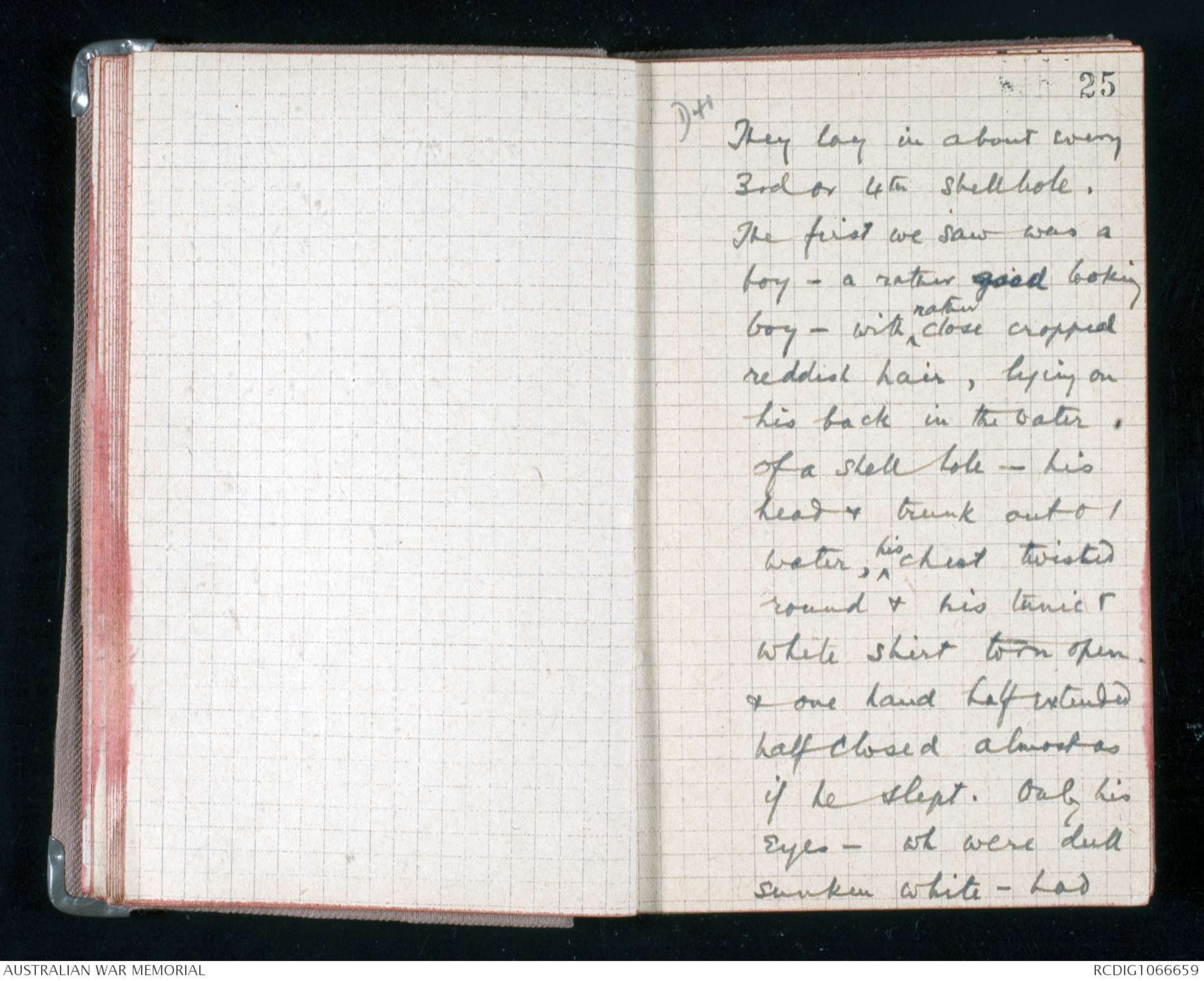
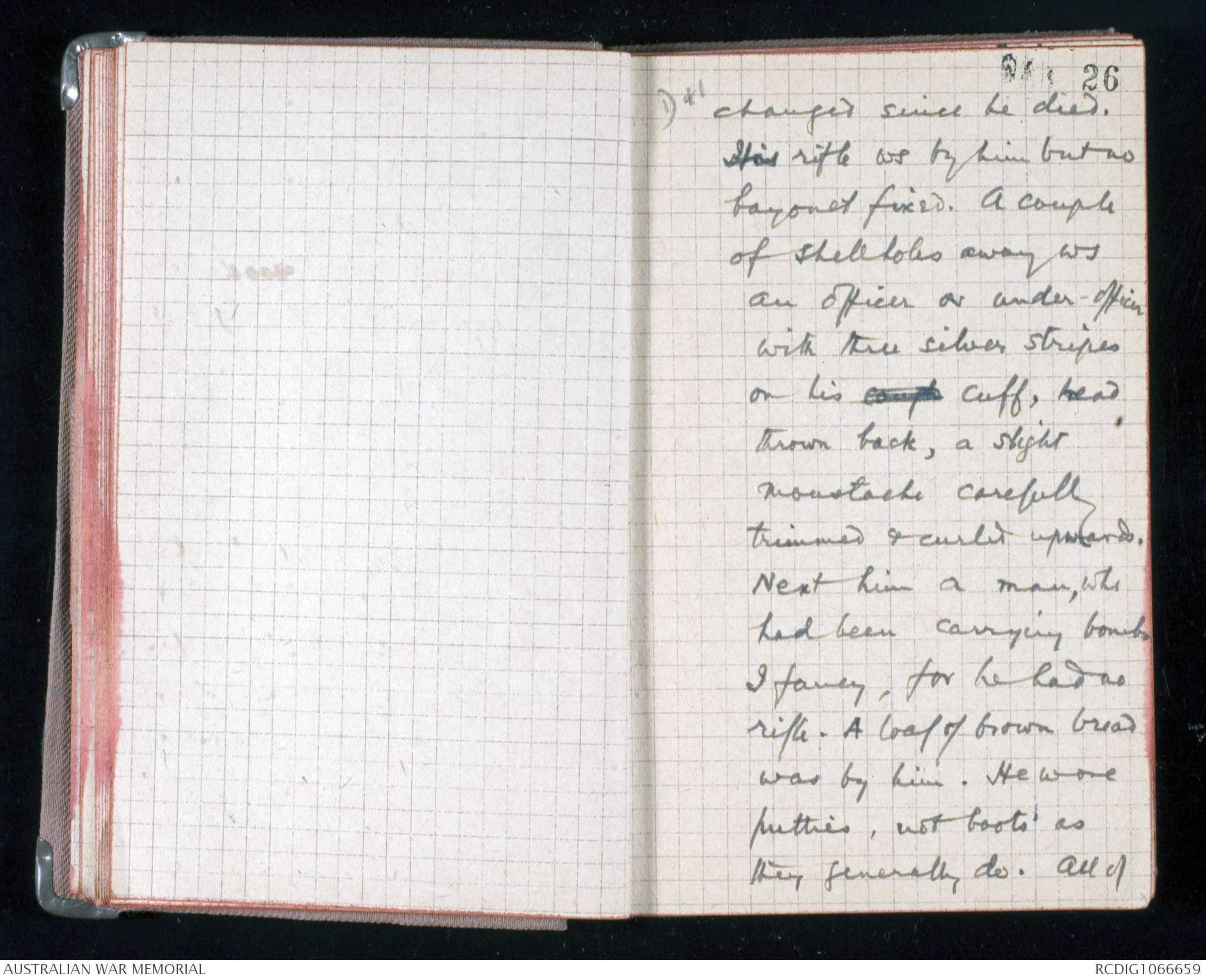
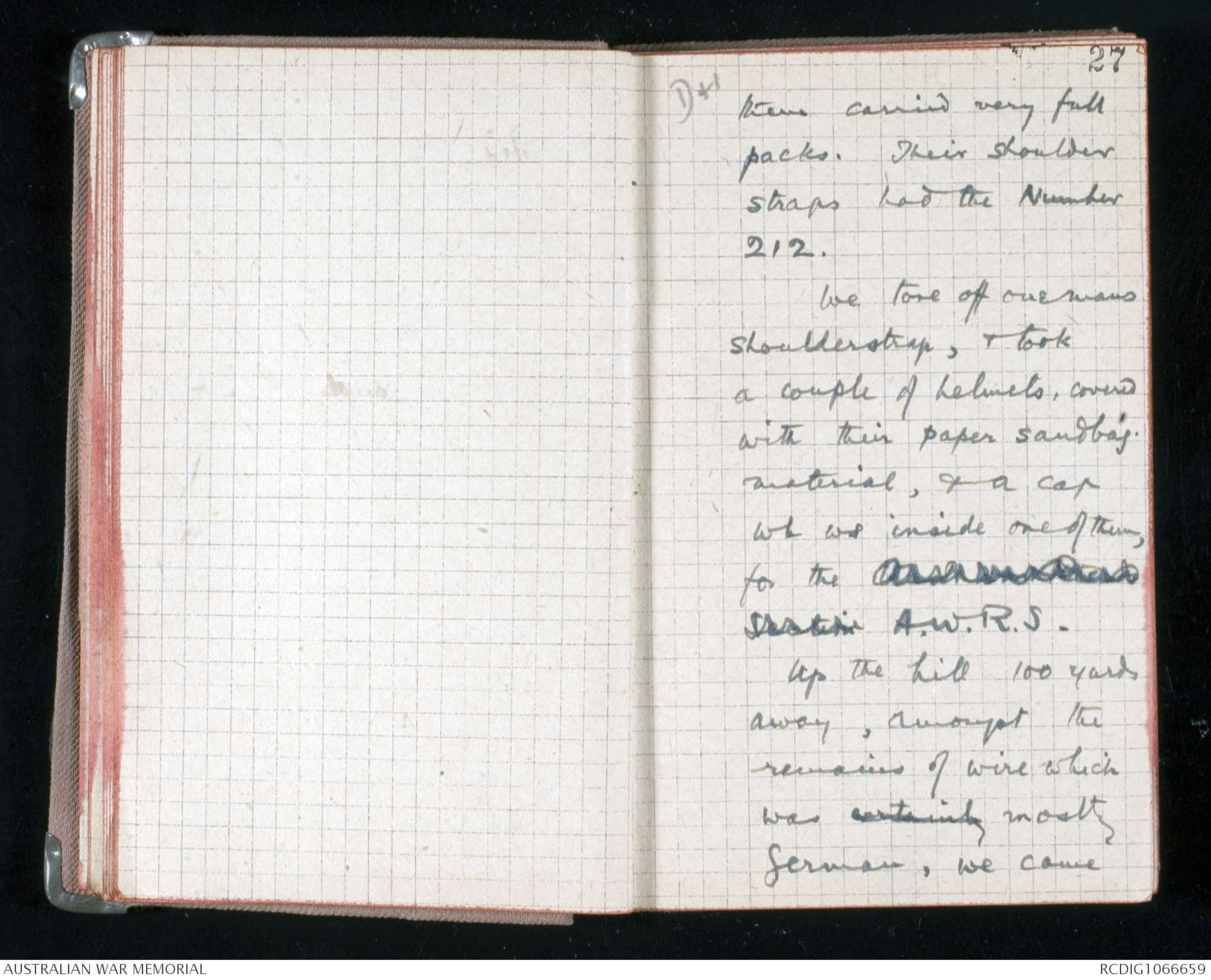
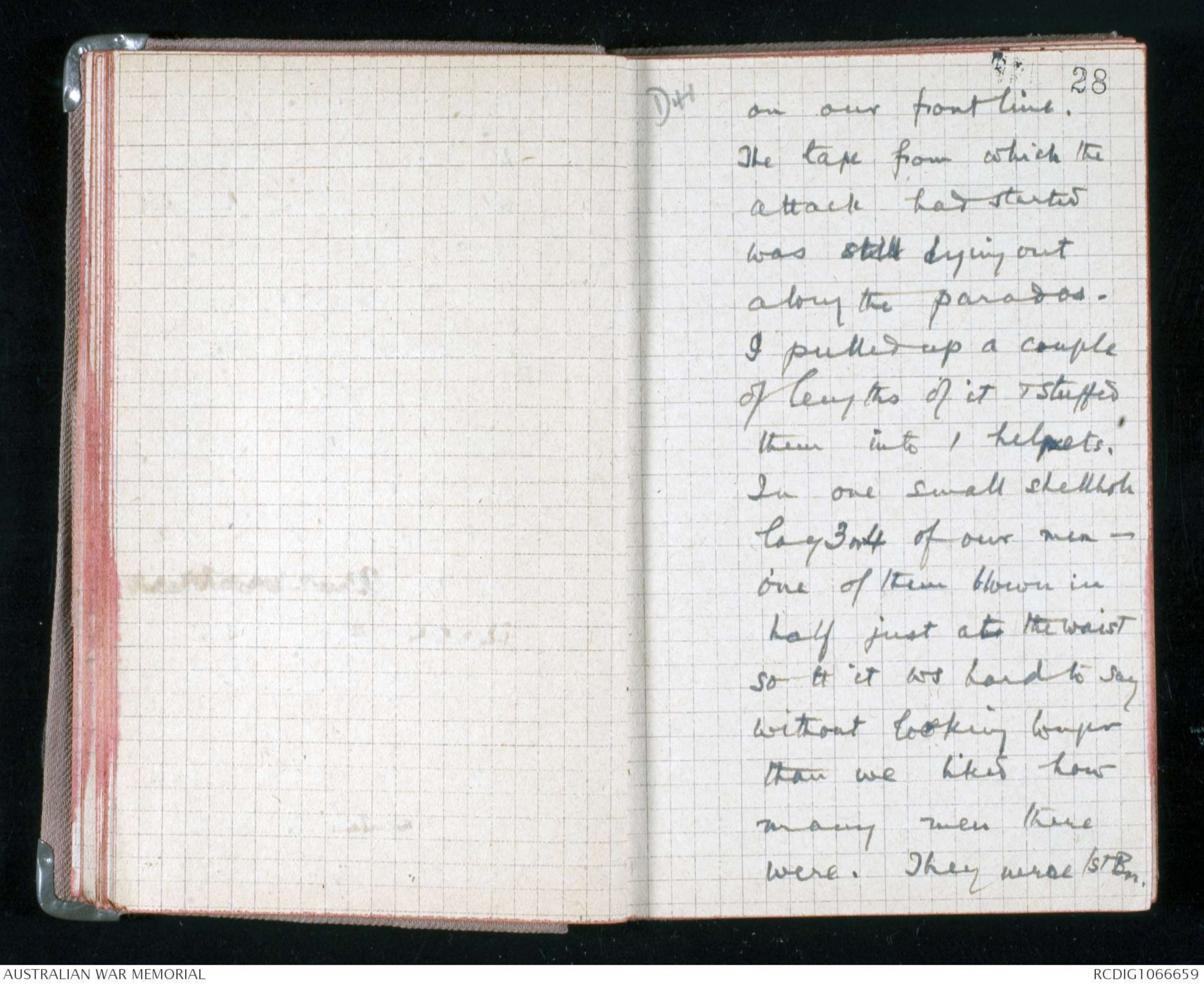
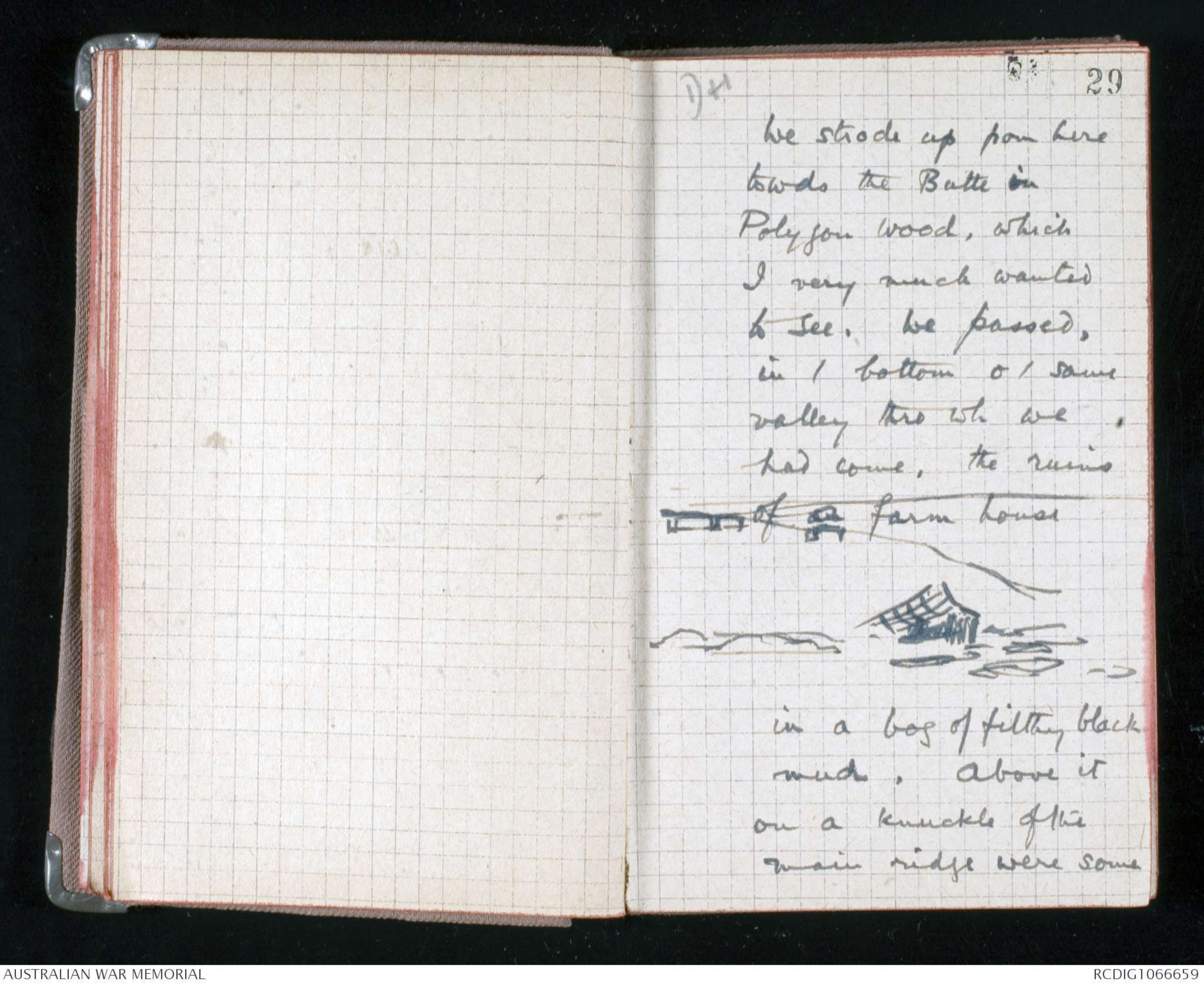
19a
Hand drawn diagram, see original
D41
20
There were some men
dug into / far side o / place.
[This ws / crater wh
ws / H Qrs o / German
front line, & where theyhad made their stand
on Oct 4)
We x went off
down / hill
striking between Romulus
& Remus Woods. About
30 yds down we noticed
/ steeper slope o / hills forming
a bank under wh the
first wave (8 Bn) dug in on
Oct 4, for shelter from
shell, beyond its objve.
Hand drawn diagram, see original
D41
21
From / top of the hill
we cd see every ridge to
Ypres - the haze prevented
me from seeing Ypres towers
clearly - but I have no doubt
one cd easily have made
them out amongst / trees:
Hand drawn diagram, see original
D41
22
We went down / hill W -
at first we thought Retaliation
Farm was the place one of thebetween three concrete
shelters by Romulus Wood.
(But afterwards I came
to / conclusion tt it ws
a prominent broken down
farm building wh we
passed later on our left).Xx Nearing the valley bottom,
between / two woods, I
knew we ought to come
across signs o / Germans
who had bn k. in the
attack of Oct 4 when
our men met them in
D41
23
Nomansland.
Sure eno', on top o
/ shell holes, between /
two woods, was a
clump of grey clothes.
There was another nearer
to Remus - & another
nearer still to it.
We had no more plates
(Wilkins had ^just used his
last in photographing a
carrying party taking
iron corkscrew pickets
up / duckboards
onto / ridge). We
I thought this must be
too far back for /
front line of Germans. So
D41
24
we went on, over
the little trickle bordered
by willow stumps wh
ran in / bottom o /
valley (a good deal
battered in its course
by shellholes) & up
/ beginning o / further
slope towards the
spur (it is little more
than a swelling) S. of
Zonnebeke, where our
line had started from
tt day. About 100
yds from where our
line wd be we
found them. On
D41
25
They lay in about every
3rd or 4th shell hole.
The first we saw was a
boy - a rather good looking
boy - with ^rather close cropped
reddish hair, lying on
his back in the water
of a shellhole - his
head & trunk out o /
water, ^his chest twisted
round & his tunic &
white shirt torn open.
& one hand half extended
half closed almost as
if he slept. Only his
eyes - wh were dull
sunken white - had
D41
26
changed since he died.
His rifle ws by him but no
bayonet fixed. A couple
of shell holes away ws
an officer or under-officer
with three silver stripes
on his coupl cuff, head
thrown back, a slight
moustache carefully
trimmed & curled upwards.
Next him a man, who
had been carrying bombs
I fancy, for he had no
rifle. A loaf of brown bread
was by him. He wore
putties, not boots as
they generally do. All of
D41
27
them carried very full
packs. Their shoulder
straps had the Number
212.
We took off one mans
shoulder strap, & took
a couple of helmets, covered
with their paper sandbag
material, & a cap
wh ws inside one of them,
for the Aust War RecordsSection A.W.R.S.
Up the hill 100 yards
away, amongst the
remains of wire which
was certainly mostly
German, we came
D41
28
on our front line.
The tape from which the
attack had started
was still lying out
along the parados -
I pulled up a couple
of lengths of it & stuffed
them into / helmets.
In one small shellhole
lay 3 or 4 of our men -
one of them blown in
half just at the waist
so tt it ws hard to say
without looking longer
than we liked how
many men there
were. They were 1st Bn.
D41
29
We strode up from here
twds the Butte in
Polygon wood, which
I very much wanted
to see. We passed,
in / bottom o / same
valley thro wh we
had come, the ruins
of a farm house
Hand drawn diagram, see original
in a bog of filthy black
mud. Above it
on a knuckle of the
main ridge were some
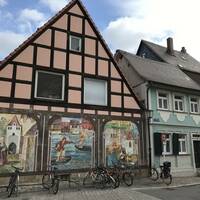 Robyn G
Robyn GThis transcription item is now locked to you for editing. To release the lock either Save your changes or Cancel.
This lock will be automatically released after 60 minutes of inactivity.